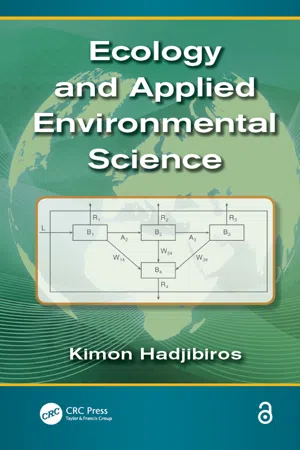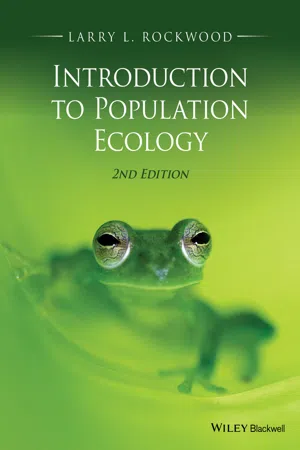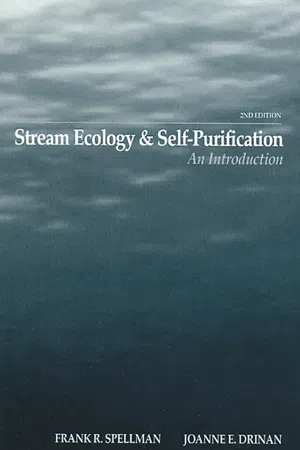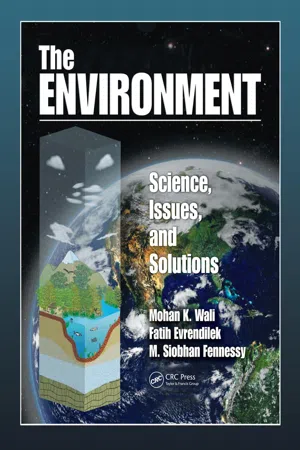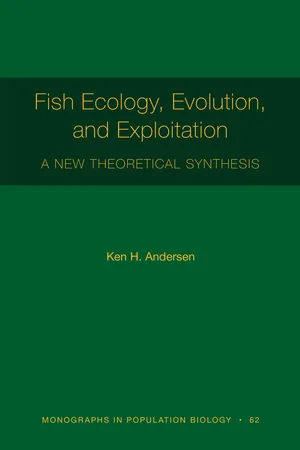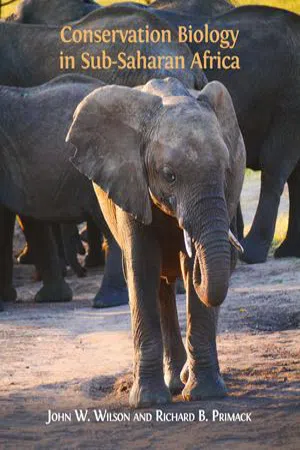Biological Sciences
Population Size
Population size refers to the total number of individuals of a particular species in a defined area at a specific time. It is a crucial measure in understanding the dynamics of a population, including factors such as birth rates, death rates, and migration. Population size is a fundamental concept in ecology and conservation biology, influencing the health and sustainability of ecosystems.
Written by Perlego with AI-assistance
Related key terms
1 of 5
7 Key excerpts on "Population Size"
- eBook - PDF
- Kimon Hadjibiros(Author)
- 2013(Publication Date)
- CRC Press(Publisher)
15 © 2010 Taylor & Francis Group, LLC Chapter 3 Organisation at Population Level 3.1 POPULATION AND ECOSYSTEM The study of the living elements of an ecosystem could theoretically mean the examination of the actions of all organisms, which are extremely numerous. Therefore, for practical reasons, organisms should be grouped, and individu-als of the same species that live in the same space should be examined as a whole. Thus the concept of population results, which constitutes a basic ecological unit. A significant part of the phenomena observed at a population or ecosystem level can be explained through the interactions of populations. Populations are formed by groups of individuals of the same species that live in a certain place so that they can breed with one another. The total of populations living in one place is called biological community . Important issues concerning population ecology are the prediction of: • Population change over time • Population distribution in space • The abundance of each population within the biological community • The distribution of the individuals of a population by age and sex Population is a characteristic case of a system. Even though population is nothing more than the total of individuals comprising it, it can be described by parameters and variables, such as Population Size, natality, mortality, immigration, age distribution etc. that have no meaning for each one of the individuals but only for the population itself. These parameters determine in any given moment the state of the population, its temporal change and the manner in which external circumstances affect it. The ecological niche is an important concept of theoretical ecology. It represents the space of a population’s ecological activity, i.e. - eBook - PDF
- Larry L. Rockwood(Author)
- 2015(Publication Date)
- Wiley-Blackwell(Publisher)
In reality, unless we are considering a population on a remote island, a mountaintop, or an isolated cave, pop- ulations are not closed to immigration or emigration. Unless we have successfully marked all individuals in a population, we are usually unaware of which individu- als might be recent immigrants. Turchin (2003) integrates these ideas in his definition of a population: “a group of individuals of the same species that live together in an area of sufficient size to permit normal dispersal and migration behavior, and in which population changes are largely determined by birth and death processes.” Introduction to Population Ecology, Second Edition. Larry L. Rockwood. © 2015 John Wiley & Sons, Ltd. Published 2015 by John Wiley & Sons, Ltd. Companion Website: www.wiley.com/go/rockwood/populationecology 5 6 Chapter 1 However, as discussed by Waples and Gaggiotti (2006) the term population has a myriad of definitions depending on whether the context is ecological, evolutionary, or statistical. They list six different definitions within the ecological context, but I remain satisfied that they all converge on either the first definition I presented above and/or the Turchin (2003) definition. A local population differs from a species or a species population, in that we are dealing with a group of individuals interacting in a particular time and space. White-tailed deer from Northern Wisconsin and the Piedmont of Virginia, according to the biological species concept, are the same species as long as they produce viable offspring when they are interbred. But they would belong to different and distinct ecological populations. In actuality, a population is often defined by the investigator(s) and may be somewhat arbitrary. - eBook - PDF
Stream Ecology and Self Purification
An Introduction, Second Edition
- Frank R. Spellman, Joanne Drinan(Authors)
- 2001(Publication Date)
- CRC Press(Publisher)
Figure 5.1 Population ecology relative to other ecological disciplines. (Source: Adapted from Alexi Sharov, What is Population Ecology? Blacksburg, VA: Department of Entomology, Virginia Tech University, p. 1, 1966.) 50 POPULATION ECOLOGY fish, aquatic plant, crustacean, and insect one by one. In that case, they would be studying individuals. It would be easier to do this if the subject were trout, but it would be difficult to separate and study each aquatic plant. The second option would be to study all of the trout, all of the insects of each specific lund, and all of a certain aquatic plant type in the stream or pond at the time of the study. When stream ecologists study a group of the same kind of in- dividuals in a given location at a given time, they are investigating a population. Alternately, a population may be defined as a cluster of individuals with a high probability of mating with each other compared to their probability of mating with a member of some other pop~lation.~~ When attempting to determine the population of a particular species, it is important to remember that time is a fac- tor. Whether it be at various times during the day, during the different seasons, or from year to year, time is important because populations change. When measuring populations, the level of species or density must be deter- mined. Density (D) can be calculated by counting the number of individuals in the population (N) and dividing this number by the total units of space (S) the counted population occupies. Thus, the formula for calculating density be- comes: When studying aquatic populations, the occupied space (S) is determined by using length, width, and depth measurements. The volumetric space is then measured in cubic units. - eBook - PDF
The Environment
Science, Issues, and Solutions
- Mohan K. Wali, Fatih Evrendilek, M. Siobhan Fennessy(Authors)
- 2009(Publication Date)
- CRC Press(Publisher)
137 Topics Populations—the Central Units in Ecology and Evolution Population Growth Regulation of Population Size Spatial Patterns of Population Abundance Life Histories of Organisms Interspecific Interactions and Population Dynamics 8 Population Ecology Populations—the Central Units in Ecology and Evolution As we know from the fossil record and direct observation, living organ-isms can (and do) change over time. Some groups have become extinct, while others have become more diverse. Population changes do not come about because an individual changes genetically in response to its environment. Rather, it is a population that changes as the rela-tive frequency of different genes (or different forms of genes, alleles) changes within the population. Any genetic change that confers an advantage in survival and reproduction is more likely to be passed on. If, over generations, this leads to a change in gene frequency, then evolution has occurred. However, environmental factors often act randomly and do not necessarily lead to change. A rodent that has a greater range of diet and is capable of producing healthier off-spring might just as easily be killed by a predator or a storm as her littermate that lacks these characteristics. The environment is com-posed of a complex interplay of factors that may confer advantages and disadvantages to a species and to individual organisms. For centuries, humans have used their knowledge of “selection” to select for certain desirable traits in countless domestic plants and animals. However, despite a long history of breeding by humans into endless variations from original forms, we can still recognize all dogs, all apples, and all horses as such. Biologists refer to these as species. The branch of biology that covers the study and naming of different kinds of species is called systematics. - eBook - PDF
Fish Ecology, Evolution, and Exploitation
A New Theoretical Synthesis
- Ken H. Andersen(Author)
- 2019(Publication Date)
- Princeton University Press(Publisher)
Part II POPULATIONS CHAPTER FOUR Demography The first part of this book established the size structure of the entire ecosystem. The description rested upon the rule that bigger individuals eat smaller individu-als and upon the limitations that organism size and physiology place on metabolic processes. From the perspective of an individual organism, the size structure of the ecosystem determines two central conditions for life: the availability of food and the predation risk from larger individuals. However, ecosystems and commu-nities are not made up only of individuals, they are also made up of populations. In this second part, I combine the description of individual growth and reproduc-tion (chapter 3) with the description of the ecosystem from the previous chapter to determine the structure of a population within the ecosystem (this chapter). The perspective of demography is mainly static, as it emerges when the food and pre-dation environment are fixed. The dynamic interplay between the population itself and its food and predation is taken up in part IV. The static perspective on demog-raphy is the backbone of current fisheries advice and management, and I explore the consequences of fishing on the population (chapters 5 and 6). Some aspects of dynamics, though still in fixed food and predation environment, are considered in chapter 7. The demographic structure of a population is described by a Population Size spectrum N ( w ) . The Population Size spectrum differs from the community size spectrum N c ( w ) from chapter 2, in that it represents the abundance of individuals in only one population. The range of sizes is therefore limited to the span from offspring size to the asymptotic size. In this chapter, I will show how the popula-tion size spectrum can be calculated if we know the vital rates of the individuals within the population: the growth rate, the reproduction rate, and the mortality as functions of size. - eBook - PDF
- W. Johnny Wilson, Richard Primack(Authors)
- 2019(Publication Date)
- Open Book Publishers(Publisher)
But how can we identify the species most likely to go extinctions soon, and how can we determine which actions should be taken to save them? The field of population biology, defined as the study of population dynamics over time and space, provides us the tools to answer many of these questions. 9.1 Monitoring Population Size The primary aim of population monitoring is to detect changes in the environment, Population Size, and species distribution over time. Such monitoring efforts frequently focus on a particular area or a population of concern, but it can also target more common but sensitive species, such as butterflies and macroinvertebrates, which can function as indicator species to assess ecosystem condition (Section 4.2.6). The great number of methods (which are all types of surveys) used to monitor populations usually fall into one of three different categories: biodiversity inventories, population censuses, and demographic studies. 9.1.1 Biodiversity inventories A biodiversity inventory is an attempt to document which species are present in some defined locality. Such an effort can focus on one specific taxa (e.g. a bird survey) or several taxa, on a small area (e.g. a city park) or large area (e.g. a large national park), over a short period of time (e.g. a few hours) or long period of time (e.g. several years, Box 9.1). There are many methods to compile a biodiversity inventory, ranging from uncomplicated to highly organised, performed by a single person or a large team of experts. Some of the most popular methods for biodiversity inventories include site visits by professional naturalists and questionnaires distributed among local people. To tap into the knowledge and eagerness of amateur naturalists, conservation biologists are also increasingly compiling biodiversity inventories using citizen science surveys (see Box 15.3). - eBook - PDF
- Stephen D. Fretwell(Author)
- 2020(Publication Date)
- Princeton University Press(Publisher)
SECTION I THE SIZE OF SPECIES POPULATIONS CHAPTER ONE Models for Long-Generation Species Populations living in a seasonal environment are exposed to regular or systematic changes in resource quality and abundance. The populations respond to these fluctuations in resources with changes in Population Size and with qual-itative changes in the way resources are used. In temperate regions, many populations grow during the summer and decline through the winter. One kind of food is consumed through the summer, another through the winter. One kind of predator affects the summer population, another kind affects the winter population. Some organisms are active in the summer but spend the winter hibernating, or in a diapause, or in a resistant egg. Many organisms mi-grate to new environments or habitats. Social systems some-times change with the seasons. This chapter offers some simple mathematical or graph-ical ways of analyzing seasonal trends in Population Size. The methods have been developed in order to answer the question: How will changes in the environment influence the population? I think that the answer to this question in-volves a thorough understanding of the population, its size and its fluctuations. The size of populations living in a seasonal environ-ment usually varies in a systematic fashion. The population increases during one or several seasons, may be stable dur-ing other seasons, and declines during the rest. On the average the declines equal the gains, so at a given point in the (annual) cycle of seasons the population shows only 3 M O D E L S FOR L O N G -G E N E R A T I O N S P E C I E S random changes in size. On the basis of this simple idea, we shall develop some ideas about populations in a sea-sonal environment.
Index pages curate the most relevant extracts from our library of academic textbooks. They’ve been created using an in-house natural language model (NLM), each adding context and meaning to key research topics.
